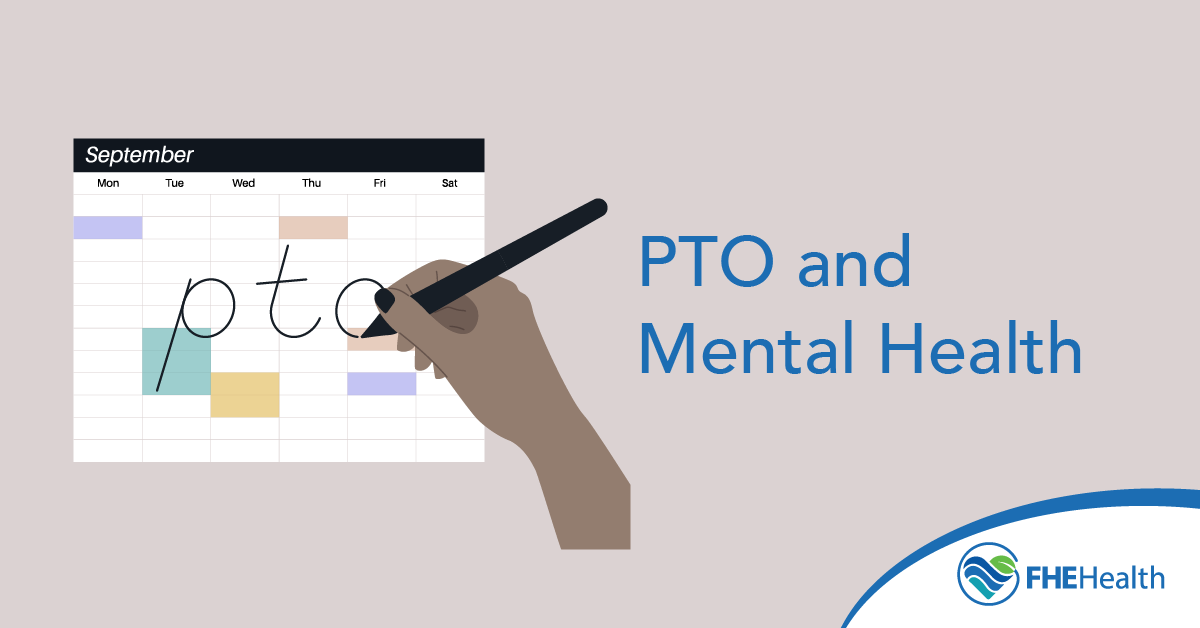
Outside of America, paid time off from a job is usually a given, regardless of the reason it’s being used. But while their European counterparts enjoy several guaranteed weeks of paid vacation each year, workers in the United States usually receive far less — if any at all. As NPR noted in 2023, American workers aren’t guaranteed any paid time off. That makes taking time off for mental health challenging at best and allows mental health days off work a rare benefit.
The Link Between Time Off and Mental Well-Being
Mental Health America notes that taking PTO for mental health has an energizing effect on workers — they return to the office rested and feeling more productive. Outside the office, the benefits are even more apparent, with crises like burnout and depression less likely to appear in people who aren’t chronically overworked and in desperate need of rest and relaxation.
Why Americans Struggle to Use Their PTO
If taking mental health days is so beneficial, why does the rallying cry of U.S.-based workers appear to be “I need a vacation” so often? The answer is that it’s not as simple as stepping out of the office and packing a bag, and the domestic economy and work culture are only making it harder.
In a 2024 article, USA Today emphasized that Americans aren’t great at using their allotted vacation time — less than half of survey respondents planned to use it all. There are a number of reasons for that, both in and out of the office.
- Who will watch the children/pets? Childcare and pet care costs are continually rising, making it difficult to budget adult-only vacations.
- How will I pay for the hotel/flight? Travel costs can be prohibitive depending on destination, particularly for direct flights or accommodations that aren’t booked very far in advance.
- What about that important project? The rise of lean staffing trends means fewer coworkers to pick up the slack during extended absences, making it difficult to step away from work.
- How will we afford this vacation? With prices on everything from theme park tickets to excursions in foreign countries on the rise, even if an American worker is lucky enough to get paid vacation, the pay might not be enough to sustain the household and pay for fun, too.
And if a worker can manage to check all these boxes while taking time off for mental health, statistical chances are that their workload temporarily falls to someone who can’t. That increases overall stress in the office, diminishing the benefits of a single team member taking a mental health vacation.
Mental Health Benefits of Taking Regular Breaks
A 2022 study published in the National Library of Medicine cited something called the Human Energy Crisis when it comes to the always-on culture present in so many businesses. Essentially, as workers are expected to do more and work longer days than ever before, their ability to recharge their proverbial batteries diminishes steadily over time. Eventually, they become so mentally and physically exhausted that their quality of life and work productivity suffer measurably.
If, on the other hand, their employer embraces the idea of taking time off for mental health and supports measures like work-from-home and hybrid (partially in-office) scheduling, the opposite is true. By offering employees personal freedom in scheduling their own days off as needed, employers can reduce the risks that mental crashes and creative burnouts hit the office. It’s a gesture that says, loud and clear, “We trust you to know your own limits and advocate for yourself.”
How to Plan Time Off for Maximum Mental Recovery
Planning time off around work holidays and weekends already in place has been a time-honored tradition in PTO. This is often the best way to get a longer stretch of days off from work, which in turn makes planning travel and vacations much easier.
Consult your employee handbook, website or HR department to determine if there are any rules or expectations around this practice; however, some workplaces rescind holiday pay if the day before or after that holiday is taken as PTO. In general, it’s best to schedule your mental health days off work around your already scheduled days off, such as weekends, to give you the best length of time away from your desk.
Encouraging a Culture of Rest in the Workplace
Employers can offer flexibility and empathy for their employees through measures like flex time, which allows employees to make up time elsewhere if they need to come in late or leave early. Medical and dental appointments, particularly for children, can also be difficult to arrange. Allowing employees to divide up PTO to use in these cases as needed, rather than requiring a full day each time, can alleviate some anxiety and leave time for mental health days.
In addition, work from home and hybrid jobs ensure employees can devote their time and attention to work without the hassles of everyday commuting, hurried lunch breaks and the stress of business casual wardrobes. While these may seem like small annoyances, over time they add to pressure, personal costs and even resentment, leading to a less-than-ideal work relationship between employer and employee.
When Time Off Isn’t Enough: Seeking Additional Support
When longer periods away from work are required to restore mental health and well-being, sometimes ongoing therapy, medication or even outpatient clinics can help overworked, struggling employees find their footing again. In these cases, the best support an employer can offer is the guarantee of the employee’s position when they return.
If mental health days off work aren’t resetting the stress meter in your life, it’s time to discuss new strategies with a competent, caring mental health professional. The team at FHE Health is available 24-7 to help you rediscover your best self and lead a happier, healthier life on and off the clock. Contact us today!






